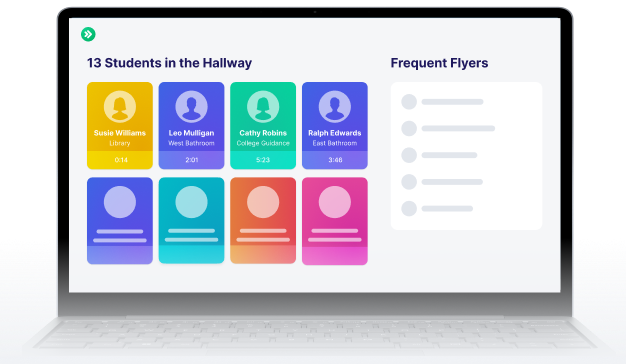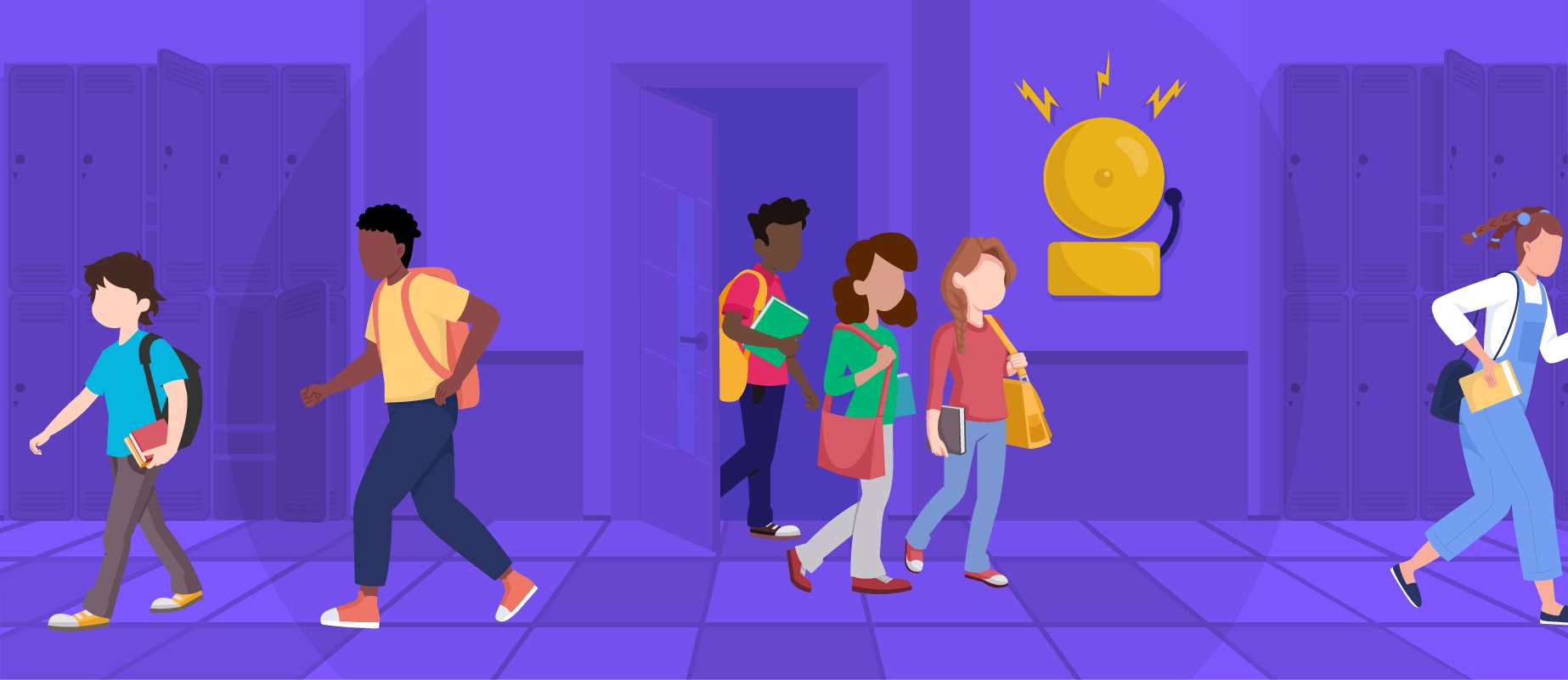In the News: Enhancing Safety in Schools Across Minnesota
Read the Story
SmartPass Co-Founders Listed on Forbes 30 Under 30
Read the Story

Lee Moskowitz
.avif)

Schools prepare students to be lifelong learners with the skills and knowledge to tackle their goals and be part of their community. One of those key skills is accountability. So, what does student accountability mean and how does it impact education? When students receive quality instruction and support and are accountable for their learning and behavior outcomes in school, they’re more likely to be engaged in their education.
Since everyone in a school is connected and their behaviors and experiences affect school culture and their peers, as well as themselves, student accountability strategies are essential. Teachers play an important role in establishing and maintaining student accountability, but it’s too big and complex for them to take on alone. Principals and school leadership are core pieces of the school accountability system, setting intentional policy, making sure resources are available, and providing real support and connection for everyone.
The impact each person’s actions have on the classroom and school culture adds up and wider outcomes are influenced because of it. A positive school culture is only possible when a core group of the school community is stepping in to meet expectations. A constructive learning environment can only happen when students are taking on their tasks in the learning process and communicating when they need support.
Student responsibility plays an important role in academic achievement and behavioral trends. An intentional student accountability program that clearly establishes expectations and creates the processes and supports that students need to meet them sets students up for success. It’s a key part of addressing behavioral issues and other areas where students may be struggling.
Why is student accountability important? When the whole school is on the same page for student expectations and feels they have a voice and role in the outcomes, it helps students learn better and makes for a more positive school environment.
Student accountability is a broad topic, though. It can apply to how students approach their learning, how much progress they make, how they view and treat their fellow students, teachers, and school staff, their behavior in and out of the classroom, and more. The core framework is for students to be aware of expectations, to be plugged into the process, to know the outcomes, and to take on the responsibility for any positive or negative consequences that result.
Real-world examples of student accountability initiatives in schools can include a range of things like attendance policies, hallway management, student passes, daily classroom behavior rewards and consequences, detention, or classroom contracts to work out community commitments and values with students. Here are a few programs that found success in boosting their student accountability:
1) Pinelands Regional High School tackled hallway behavior and classroom attendance issues by implementing SmartPass, which gave them a way to increase and support student accountability. It led to a 60% decrease in class cutting, along with plenty of wider benefits:
SmartPass is more than a digital hall pass tool. It’s a student accountability system that has transformed our school and helps keep students where they are supposed to be– in class.
—Rich DiMauro, Instructional Technology Coach/Special Education Intervention at Pinelands Regional High School
2) Clear expectations and consistent accountability were part of the focus of Urban Prep’s uncommon approach to school structure and discipline, and it made a big impact on the students and community, including 100% college acceptance rate for their graduates. The key to their initiative was that responsibility and expectations were built on a foundation of respect, community, and consistent personal connection for students.
3) Berlin High School was able to lower behavioral referrals by 45% by giving their students, teachers, and school community a clear and consistent universal system. Instead of a different thing happening in every classroom, communication was easier, data was available, and time and energy were able to go back into quality instruction and intentional connection:
SmartPass has been one of the most impactful investments we've made in the last five years here at Berlin High School. The biggest difference for us is that we see fewer students where they shouldn't be and more students where they should be—which is in the classroom during class time.”
—Bryant Bednarek, Principal at Berlin High School
Student behavior and engagement have been especially struggling since Covid. In addition to students and schools reporting increased difficulty with mental health, academic, and behavioral issues, 72% of US schools have reported an increased level of absenteeism. Why a student misses school can be due to a variety of medical, academic, or personal reasons, but the missed school time means they are less engaged in the school community and their education. It’s also important to note that even before Covid, 40-60% of students showed signs of disengagement.
And engagement matters. According to the National Association of State Boards of Education, “Students who are connected to school get better grades, attend more often, have fewer behavioral challenges, graduate from high school, and go to college at higher rates than their disconnected peers.”
This isn’t a surprising statement, but it’s important because what makes for a good student accountability system is often the same as what will increase student engagement. Programs that give students a voice, help them feel connected to their school community, show them their progress, have clear and consistent communications and expectations, and include plenty of positive reinforcement will help them stay engaged.
At the same time, until they are engaged sufficiently, it’s hard to hold them accountable. There needs to be a broader relationship and motivation at work for real progress. Show them the big picture of education and learning so they aren’t left wondering why seemingly disconnected things matter. While giving them a voice, give them the chance for self-assessment and reflection. Students who are engaged, motivated, and accountable will typically see better learning outcomes.
There are a lot of elements that create a positive school culture, including security, safety, a feeling of autonomy, student engagement, and quality school community relationships. Student accountability taps into all of these. When it’s done well, students know what they need to do, they know why, and they are able to help themselves and each other make progress toward that. Even when there’s a let-down, they are able to take part in the problem solving and repair more easily.
It’s also important to remember that student accountability needs to be differentiated just like all school interactions, instruction, and assessment. A responsible but personal behavior expectation should be the goal, which will look different for different students. Decide on a base set of needs, goals, and expectations, and take the time to find where students may need some customization so they feel seen and supported.
One area that can be a tricky spot for schools is student bathroom behavior. Building a safe and effective way to give students the access they need to bathrooms throughout the school day is complex, often puts a lot of mental energy on teachers, is a low supervision setting, and leaves a lot of safety, attendance, and behavioral loopholes when it’s not a consistent and trackable system. This can create bad social situations, negatively impact learning through lost instruction time, and even vandalism issues.
As always, clear and consistent win out. Make sure that students know what is expected of them and what the bathroom pass process is going to be. Make it simple and quick for teachers to do, so that it gets applied every time and minimizes in-class disruptions. Give students ownership in their school community and a voice in policies. Streamline things with a universal process across the school.
Technology is a key tool for today’s student accountability systems. Taking the bathroom behavioral issue from above as an example, a digital hall pass solution like SmartPass gets to the root of the problem where there is no long-term student accountability when teachers use paper passes. It streamlines things, gives students some control, lets other school staff and teachers know what’s going on, creates accessibility and privacy for students who need it, and gives the information needed in emergencies.
In general, technology solutions should fill a gap or improve a process, or generate a core outcome. They should be used to support well-crafted policies and used for data to guide human-led decision making. Student autonomy, privacy, and accessibility are non-negotiable, but the good news is that they’re often even easier when technology tools are well chosen!
Another great benefit of technology tools like SmartPass is that they make the very important step of measuring the impact of a student accountability program easier, too. Data tracking is important so that behaviors like class-cutting, behavior referrals, vaping incidents, the number of times a student leaves class, negative social interactions, and more can be seen as trends over time and viewed in the scope of a student and school’s larger daily experience. Make sure to celebrate positive outcomes seen in the data trends, too!
Student accountability is a whole-school undertaking that offers students a core learning experience. By crafting intentional policies and putting the right structure in place, principals and school leadership can make sure students clearly understand the expectations. Let them know how the daily routines and systems work, who is involved and there to support them, how they can step up and support themselves and each other, and why it is so important for them and their fellow students.
Show them how it can improve their learning environment, boost their academic outcomes, and create a more positive school culture. Consistent enforcement and genuine relationship building make all the difference in student engagement and buy-in. And don’t forget to use the tools and resources out there like SmartPass to streamline the process and lower the stress for the school community while improving outcomes! Get in touch if you want to learn more about how it could make student accountability easier and more impactful than ever in your school!



